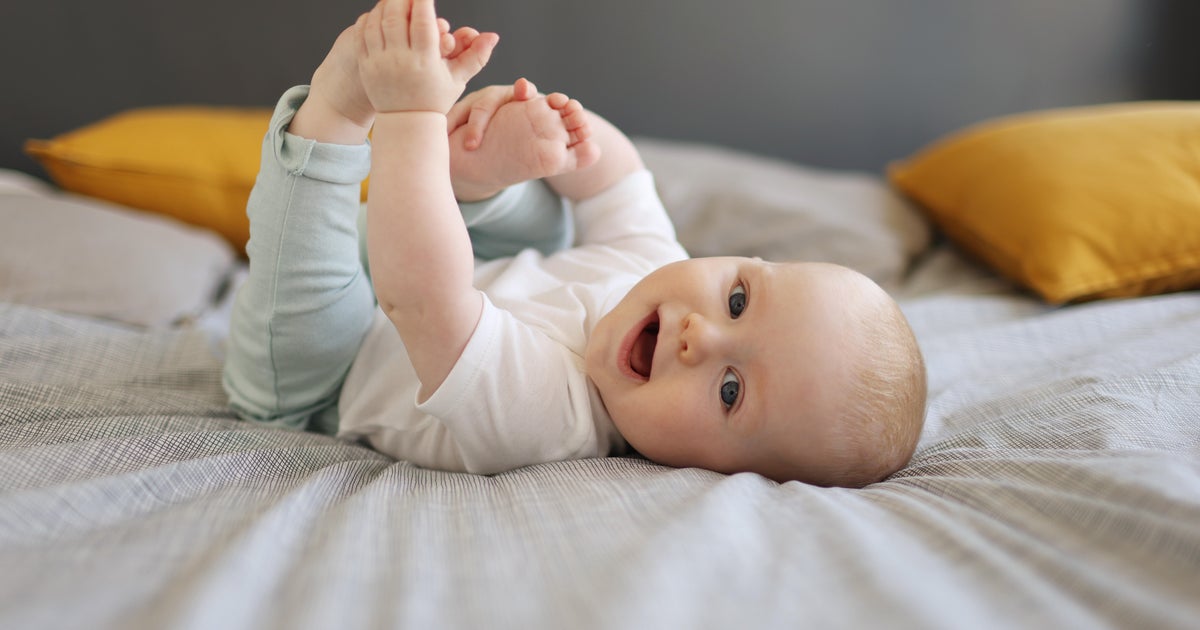“Sounds like a good idea to me,” President Trump said on Tuesday at a White House event when asked about the possibility of a federal baby bonus.
Yet the idea may be far from becoming a reality, with a White House official telling CBS MoneyWatch that no final decision on such a plan has been made.
A declining birth rate can spell long-term economic problems, including a shrinking labor force that’s financially strapped to pay for medical services and retirement benefits for an aging population. But reversing a nation’s declining birth rate could take far more than a one-time payment that, for most parents, would be quickly consumed by the costs of diapers, child care and other essentials.
Other countries with similar demographic trends have tried an array of strategies to revive their birth rates, but in most cases with short-lived results or no impact at all.
Some experts point out that by tackling long-standing economic issues — such as providing affordable day care and paid parental leave after the birth of a child — the government could provide a more hospitable environment for families. The U.S. is one of a only a handful of nations that doesn’t provide paid leave for parents, including countries such as Papua New Guinea and Suriname.
“President Trump is proudly implementing policies to uplift American families, from securing order [at the] border to keep violent criminals out of our communities, to lowering taxes and the cost of living,” White House spokeswoman Karoline Leavitt said in an email in response to a question about the baby bonus idea. “The President wants America to be a country where all children can safely grow up and achieve the American dream.”
By 2050, 26 states will take an economic hit due to their aging populations changes, with GDP declining by $162.3 billion from 2050 to 2100 over that period, according to a new analysis from PwC. Those states range from Maine to Mississippi.
Here’s what to know about baby bonuses.
How much has the U.S. birth rate declined?
About 3.6 million babies were born in the U.S. last year, according to the most recent CDC data. That’s little changed from the prior year, when the number of births hit a new record low.
The fertility rate, or the average number of children born to each woman in the U.S., dropped to about 1.6 in 2023, down from 3.7 in 1960, when the nation was in the midst of the post-war baby boom, according to data from the U.S. Federal Reserve Bank of St. Louis.
What’s causing the decline?
That’s unclear from an economic or policy standpoint, according to economists Melissa Kearney of University of Maryland, Philip Levine of Wellesley College and Luke Pardue of the Aspen Economic Strategy Group, the authors of a 2022 analysis of the birth rate decline in the economics publication Econofact.
But, they added, “Shifting priorities could be the primary driver for the decline in the birth rate since 2007.”
Survey and anecdotal data suggests that “young adults have different preferences for having children, aspirations for life and views about parenting norms that are driving the decline in the U.S. birth rates,” they wrote.
Could financial incentives increase the birth rate?
Other countries that have tried similar monetary incentives have had mixed success.
Australia introduced a baby bonus in 2004, providing $3,000 Australian dollars to parents for each birth, an amount that was eventually hiked to A$5,000.
After an initial bump in births when the policy was introduced, Australia’s birth rate has continued to decline, dropping from about 2 children on average for each woman to about 1.5 in 2023, below the U.S. rate, according to the Australian Bureau of Statistics.
Likewise, Hungary has introduced a number of incentives to convince its citizens to have more children, from providing baby grants to tax breaks for families with three or more children. Its birth rate increased slightly in the 2010s after hitting a record low of about 1.2 in 2011.
But after rising to 1.6 in 2021, Hungary’s birth rate is once again dropping, demographic data shows.
“Baby bonuses have not worked for Hungary. Why would we replicate this here in [the U.S.]?” wrote Gabriella Hoffman, the director of the Center for Energy and Conservation at Independent Women’s Forum, in a social media post.
How much does it cost to raise a child?
Raising a child in the U.S. doesn’t come cheap, with one recent analysis finding parents will spend about $300,000 to raise a child to age 18.
How would a U.S. baby bonus work?
Typically such incentives are paid either through a tax credit or a government check, similar to the stimulus checks that were given to millions of households during the pandemic.
Already, the U.S. has a Child Tax Credit of about $2,000 per child, but that is claimed on a parent’s annual tax return, which means families must wait until tax season to collect the benefit.
“Unlike the Child Tax Credit, a baby bonus could come right after a child is born — there would be no wait until next year’s tax season to get the money that parents need for a crib and a car seat today,” wrote senior policy analyst Leah Sargeant in a recent post at the Niskanen Center, a political think tank. “It can be more generously structured than the CTC because it is a supplement for a single, critical year, not an ongoing payment.”
How much would a $5,000 baby bonus cost the U.S.?
If the parent of every child born in the U.S. annually qualified for a $5,000 bonus, the cost could mount to more than $15 billion a year.
That could be tough to pass at a time when Republican lawmakers are seeking to reduce federal spending in order to pay for an extension of Mr. Trump’s tax cuts, which is currently part of a bill advancing in Congress.
Birth Rate, Trump Administration
#baby #bonus #convince #Americans #kids #Heres #data #shows

